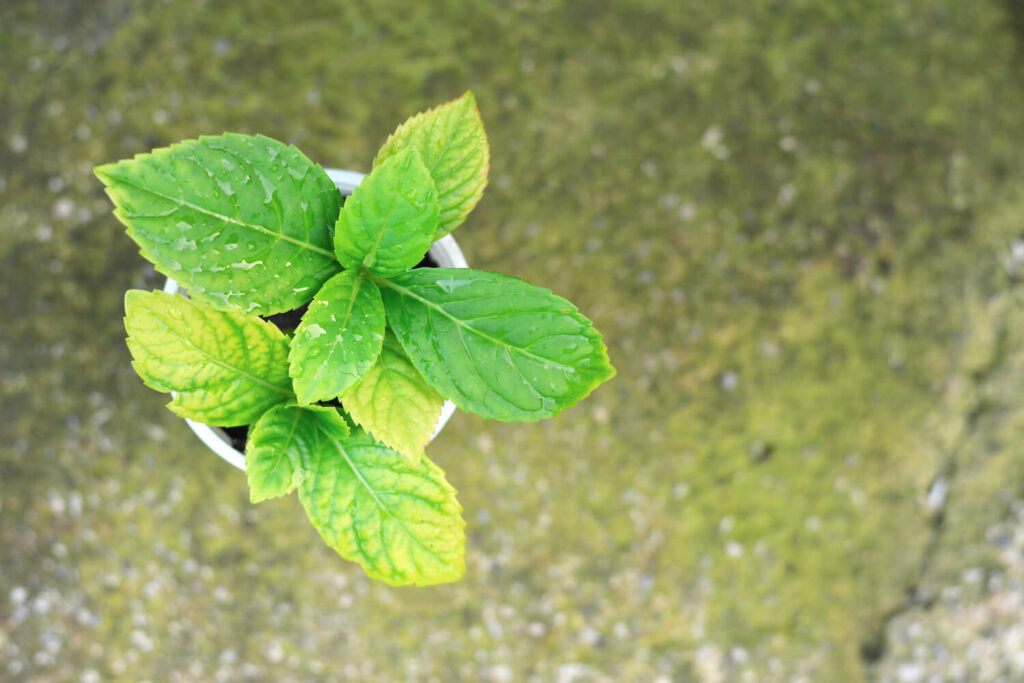Getting The Hydrangea Leaves Turning Yellow To Work
The Single Strategy To Use For Hydrangea Leaves Turning Yellow
Table of ContentsSome Known Incorrect Statements About Hydrangea Leaves Turning Yellow The Only Guide for Hydrangea Leaves Turning YellowHydrangea Leaves Turning Yellow Things To Know Before You Get ThisHydrangea Leaves Turning Yellow Things To Know Before You Get ThisThe Best Guide To Hydrangea Leaves Turning YellowAn Unbiased View of Hydrangea Leaves Turning Yellow
Big leaves often look sagging throughout the mid-day heat. When they fail to perk up in the evening or still look wilted in the early morning, your plant could be overwatered.Eliminate the plant from the dirt and prune out any roots that aren't white and turgid (plump). Do not try to remedy the issue by watering exceedingly.

Unknown Facts About Hydrangea Leaves Turning Yellow
First appears on the older fallen leaves, but the fallen leave blood vessels stay environment-friendly. While there is usually enough iron in natural soil, hydrangeas typically struggle to soak up sufficient of it.
The most effective method to stop iron deficiency-chlorosis in hydrangeas is to grow them in appropriate ericaceous or acidic soil. When growing in a bed, mix in some peat or reduced-peat ericaceous garden compost and examine the p, H value yearly. This is needed due to the fact that the garden compost blend around the plants will affect the p, H value of the soil in the future and the p, H value might climb once again.

Getting The Hydrangea Leaves Turning Yellow To Work
September is the most effective time of year to do something regarding those hydrangeas. Their leaves are transforming yellow, the blossoms have actually faded, and their gangly look is making you crazy. Beginning with the existing flowers, now is the time to reduce them for dried out arrangements. If you reduced the giant blossoms previously in the season, they will certainly wilt.
Now to deal with the staying hedge, not a rather view as winter months approaches. Mophead, Lacecap and Oakleaf hydrangeas grow on old timber. What that suggests is they will certainly flower next year on timber that was developed this year. Do not prune Mophead, Lacecaps and Oakleaf hydrangeas to the ground, as you will certainly remove the stems that are all set to bloom next spring.
That method you will not be eliminating also several of next year's flower buds. If the shrub is getting bigger than you like, you can take out a 3rd of the live timber while you're in there.
The Best Strategy To Use For Hydrangea Leaves Turning Yellow
We're ideal in the middle of our late-blooming hydrangea season here, so I thought I 'd share a tip for this specific sort of hydrangea that I discovered truly fascinating. A whole lot of people have a similar concern with their panicle hydrangeas where they start to see the fallen leaves transforming yellow and leaving at various parts of the period and it can be quite significant and quite concerning due to the fact that it can occur truly rapidly on a shrub that appears like it's otherwise truly healthy.
I've shared it on Instagram prior to, yet I realized I have actually never told you about this in a real, complete blog article, so today I'm taking care of that. When I claim that this uses to panicle hydrangeas, that means the kind of hydrangeas that usually bloom later on in summer season, normally around August.
Where we reside in area 6, they're fairly very easy to have success with and they're truly preferred in our area, which is terrific because that suggests that there are hydrangeas practically everywhere at this time of year. When you see your hydrangea leaves beginning to turn yellow, you i was reading this could assume that your plant is passing away or being maltreated in some means, yet as a matter of fact, the reverse is real.
See This Report about Hydrangea Leaves Turning Yellow

Courtenay is the writer of the book The Cleansing Ninja and has been included in countless magazines including Country Sampler Farmhouse Style, Better Homes and Gardens, Parents Magazine, Real Simple, and Our Residences.
Waterlogged soil deprives the roots of oxygen, causing root rot and yellow leaves. On the various other hand, underwatering or dehydration causes the plant to wilt and its vegetation to yellow. Maintaining a regular watering timetable and guaranteeing appropriate drainage with water drainage holes or layers can help avoid these problems.
Getting My Hydrangea Leaves Turning Yellow To Work
Routinely inspect the soil level of acidity, and adjust as required to preserve the optimal p, H level for hydrangeas. With correct care and maintenance, hydrangeas can prosper and preserve their vivid, colorful leaves. Hydrangea leaves turning yellow is an usual problem that can be associated to different factors. One of the primary factors is incorrect watering, as hydrangeas require regularly wet dirt to grow.
The type of yellowing seen (e. g. the setting of the affected leaves on the plant, and/or the pattern and placement of the yellowing on the leaf itself) will certainly typically differ according to the reason. The chlorosis is frequently accompanied by various other signs providing additional clues regarding the pop over here reason, e.Examples include sap-sucking insects such as aphids, red spider mites and whiteflies, and root feeders such as vine weevil and cabbage root fly. Once more it is commonly feasible to find the offender on the fallen leaves or among the roots.